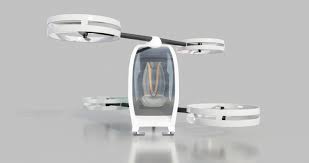
Breaking News
6.8 SPC vs. 300 Blackout: Powering Up the AR Platform
 Autism Study By McCullough Foundation Begins New Era of Free Scientific Inquiry
Autism Study By McCullough Foundation Begins New Era of Free Scientific Inquiry
 REVOLUTION DAY 8: Libertarians JOIN The Revolution
REVOLUTION DAY 8: Libertarians JOIN The Revolution
 US Government and Westinghouse $80bn Nuclear Reactor Deal
US Government and Westinghouse $80bn Nuclear Reactor Deal
Top Tech News
 Graphene Dream Becomes a Reality as Miracle Material Enters Production for Better Chips, Batteries
Graphene Dream Becomes a Reality as Miracle Material Enters Production for Better Chips, Batteries
 Virtual Fencing May Allow Thousands More Cattle to Be Ranched on Land Rather Than in Barns
Virtual Fencing May Allow Thousands More Cattle to Be Ranched on Land Rather Than in Barns
 Prominent Personalities Sign Letter Seeking Ban On 'Development Of Superintelligence'
Prominent Personalities Sign Letter Seeking Ban On 'Development Of Superintelligence'
 Why 'Mirror Life' Is Causing Some Genetic Scientists To Freak Out
Why 'Mirror Life' Is Causing Some Genetic Scientists To Freak Out
 Retina e-paper promises screens 'visually indistinguishable from reality'
Retina e-paper promises screens 'visually indistinguishable from reality'
 Scientists baffled as interstellar visitor appears to reverse thrust before vanishing behind the sun
Scientists baffled as interstellar visitor appears to reverse thrust before vanishing behind the sun
 Future of Satellite of Direct to Cellphone
Future of Satellite of Direct to Cellphone
 Amazon goes nuclear with new modular reactor plant
Amazon goes nuclear with new modular reactor plant
 China Is Making 800-Mile EV Batteries. Here's Why America Can't Have Them
China Is Making 800-Mile EV Batteries. Here's Why America Can't Have Them
Next UAS wants you to own your own eVTOL, without a pilot's license

There's nothing particularly remarkable about the aircraft design here; it's basically a single-seat coaxial octacopter running two props coaxially on the ends of four carbon arms. Indeed, probably the most interesting thing to note here is the way these diagonal arms are mounted, with four props down low and two up high, giving the iFly a kind of wonky appearance when viewed from any direction but directly above.There's no particular reason why a design like this wouldn't fly; it's a pretty basic design with a bit of redundancy built in. It's not likely to go particularly far or fast given current battery technology, but that's neither here nor there. More interesting is the idea that people will soon be owning their own eVTOLs, and that's worth talking about.

 China Innovates: Transforming Sand into Paper
China Innovates: Transforming Sand into Paper

